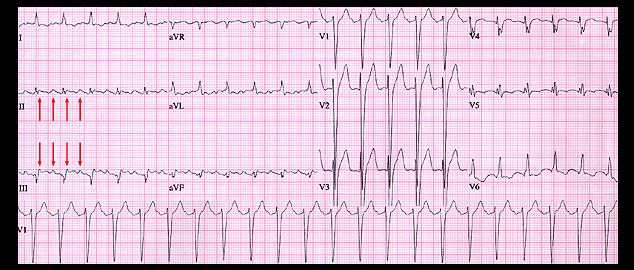
The narrow complex tachycardia is regular with a rate of 140. The correct diagnosis is atrial flutter with 2:1 AV block. The tracing points out the importance of always considering this diagnosis when the ventricular rate is regular and in the range of 130-160 (the rule of 150). Often, as in this tracing, it is difficult to see both flutter waves because one may be buried in the T wave. However, careful scrutiny of the tracing will invariably show at least one lead in which both flutter waves can be identified. In this tracing, the flutter waves are seen best in leads II and III (red arrows)
